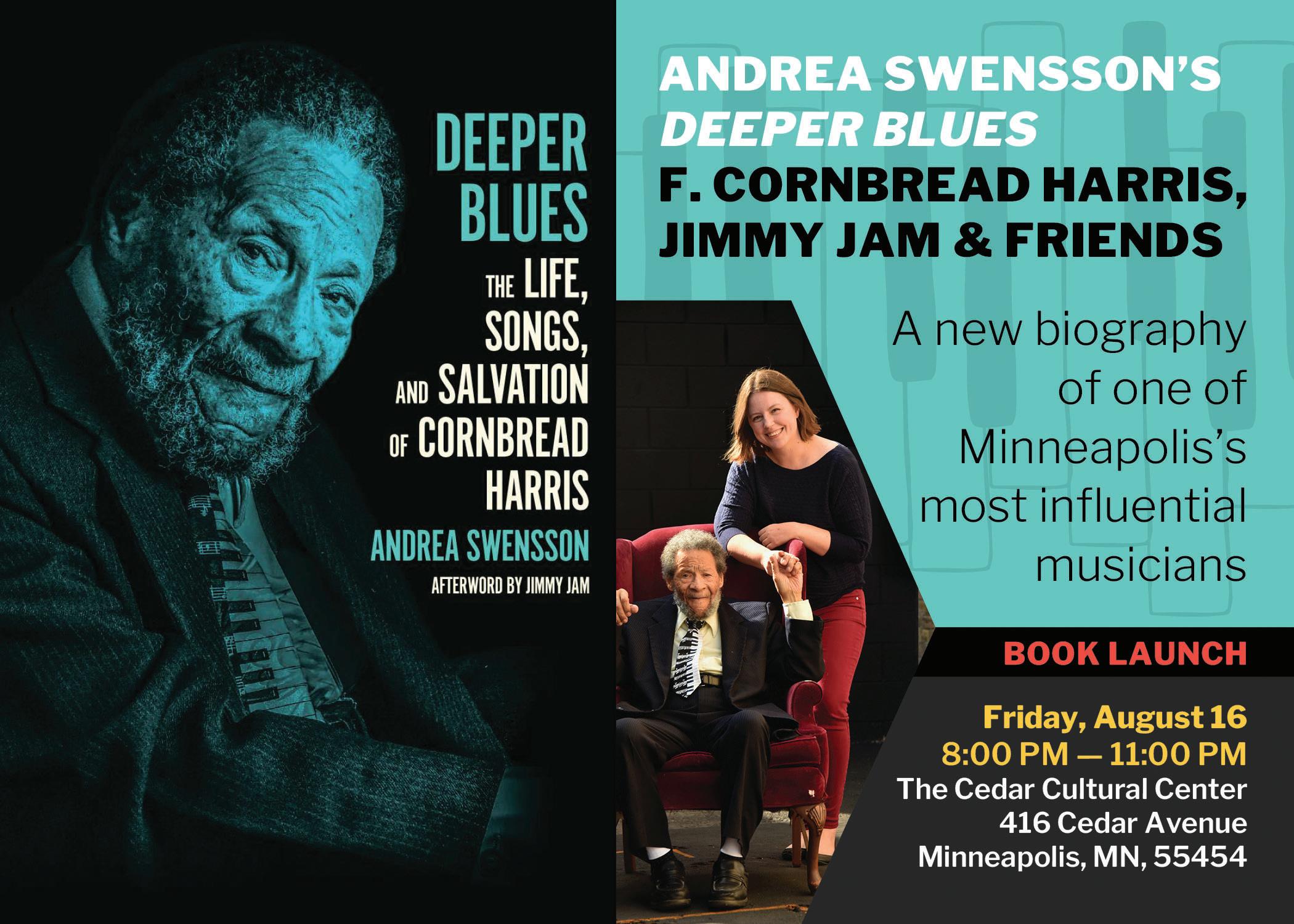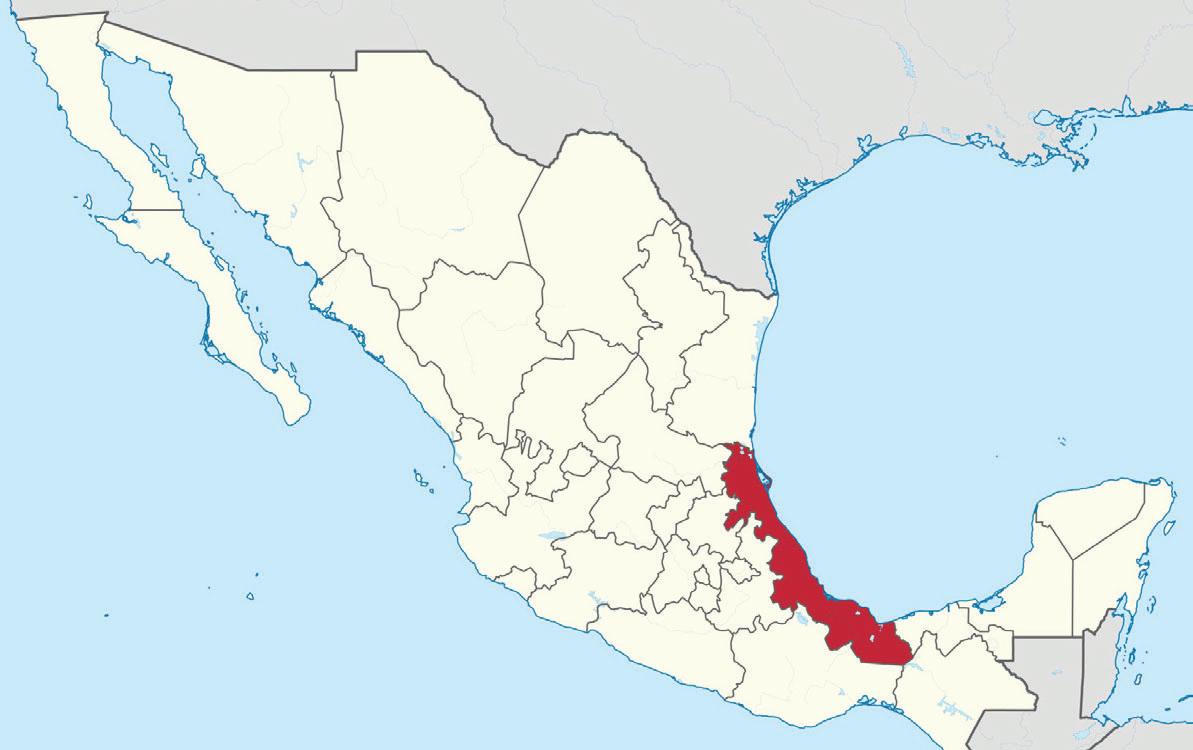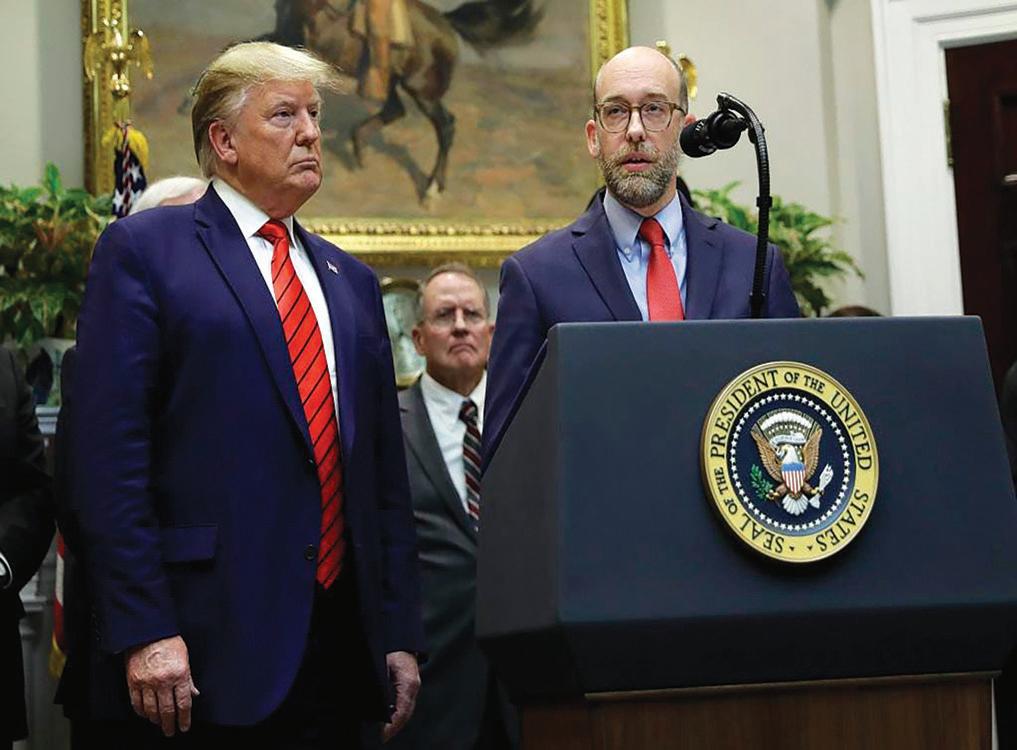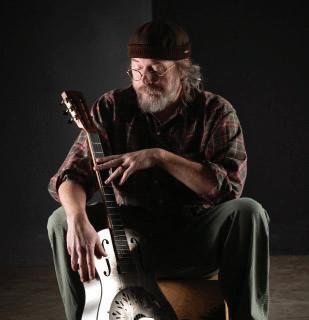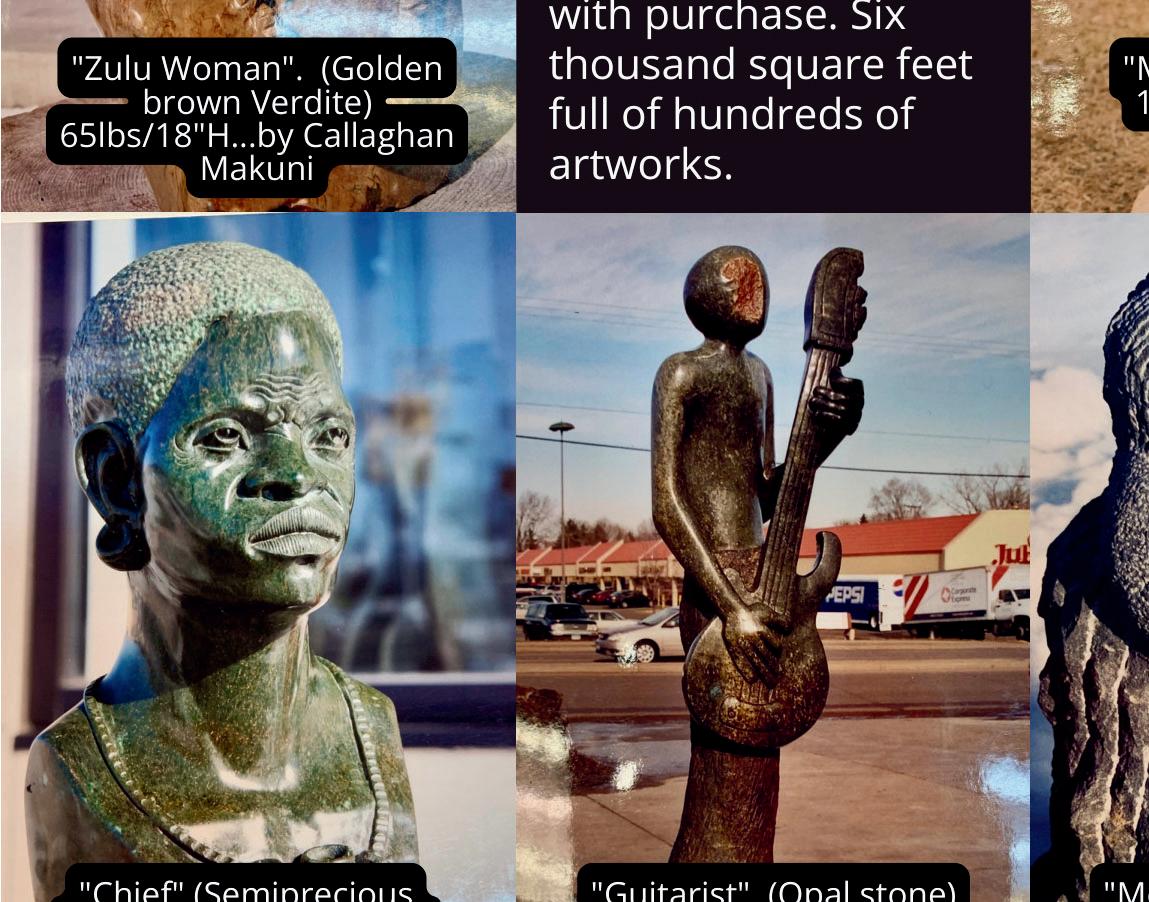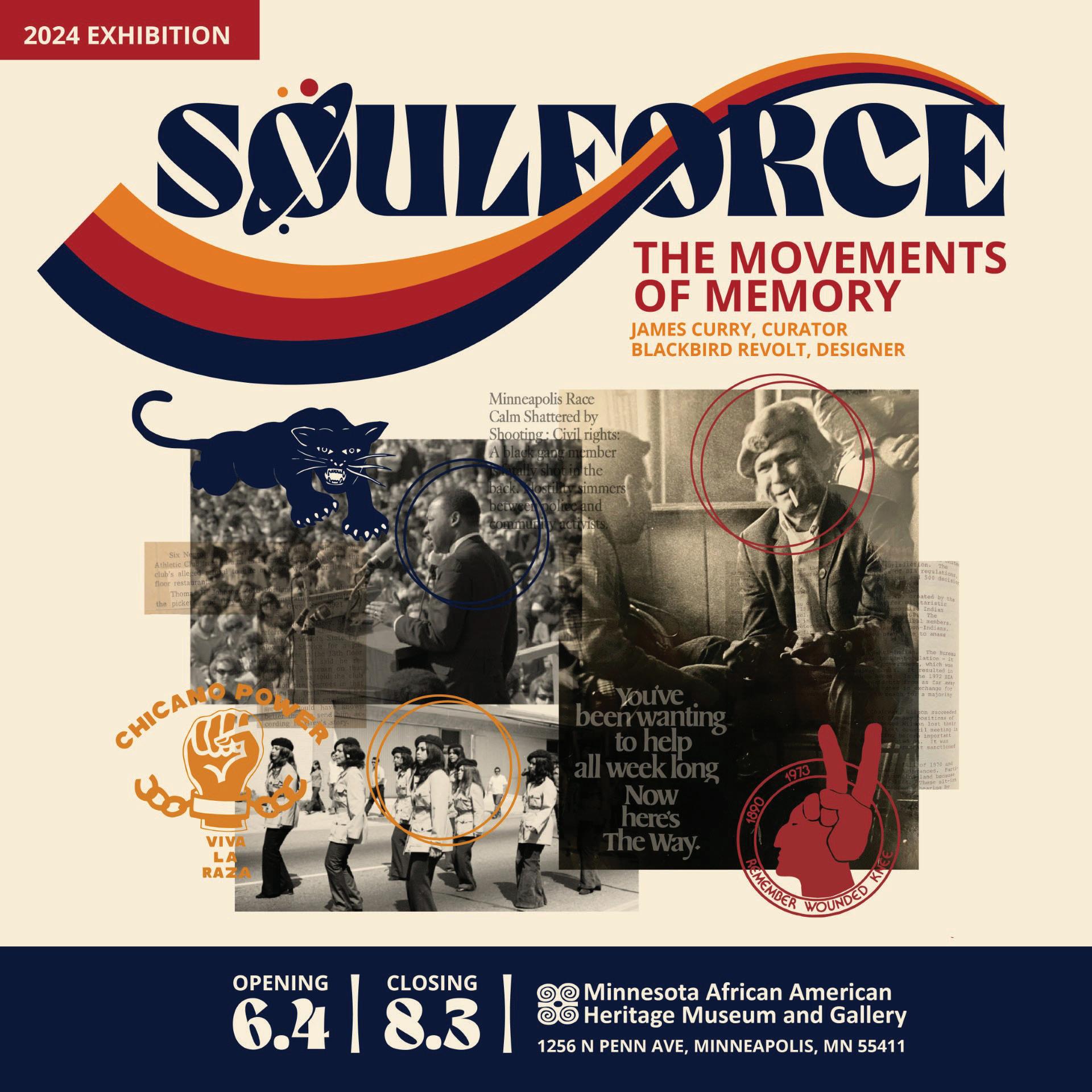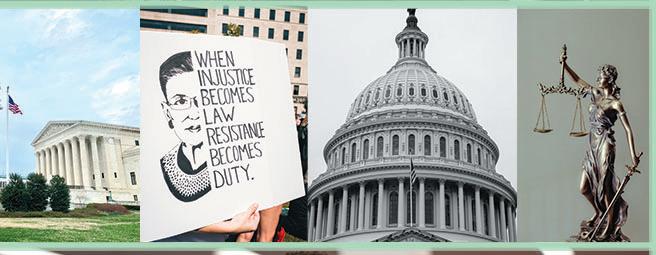Soulforce: The Movements of Memory
Editor’s note: James Curry, filmmaker artist and educator, curated Soulforce: The Movements of Memory exhibit at Minnesota African American History Museum (MAAHM) and Gallery at Plymouth & Penn in North Minneapolis. The exhibit presents panels of images and news articles covering decades of resistance, protest and change, much of it centered on Plymouth Avenue, renamed this week to Spike Moss Way.
Artist’s statement
By James Curry African Americans, Indigenous peoples, and other people of color have led and shaped vital conversations about the ways race, class and gender frame the way systemic oppression works and leads to community formations. My exhibit on Black and Indian power roots entitled Soulforce: The Movements of Memory, was an interest whose periphery I’d been circling my whole life, and rekindled by a presentation on Black, Brown and Red Power in the Twin Cities by Dr. Jimmy Patiño for the Eastside Freedom Library in August 2022. He asked; What can we learn when we think about these movements together?

In a post George Floyd socalled reckoning, this question becomes more complex with respect to the current “whitelash”. Three key themes arose from this inquiry: radical social change, interethnic solidarity, and uniqueness of place. For decades in the Twin Cities, federal housing policies explicitly promoted segregation. Governmentsponsored mortgages, insurance regulations and real estate agencies excluded Black people from specific neighborhoods. Then, under the guise of urban renewal, federal highway programs destroyed local Black residential and business districts. City dwellers with resources left early, and middle-class African Americans joined whites in the move out of the Near Northside, into the suburbs. With white flight, so went the dollars. The poorest African-Americans and
violence.
Social media and political violence – how to break the cycle
By Richard Forno Principal Lecturer in Computer Science and Electrical Engineering, University of Maryland, Baltimore County
Trump assassination attempt reveals a major security breakdown – but doesn’t necessarily heighten the risk for political violence, a former FBI official explains
By Javed Ali
Associate Professor of Practice of Public Policy, University of Michigan
As investigators analyze what led 20-year-old Thomas Matthew Crooks to try to assassinate former president Donald Trump – and how Crooks was able to fire at the former president at a heavily patrolled event on July 13, 2024, one thing is clear, according to Department of Homeland Security Secretary Alejandro Mayorkas.
“A direct line of sight like that to the former president should not occur,” Mayorkas told ABC news on July 15. That same day, President Joe Biden established an independent review of the shooting.
Amy Lieberman, a politics and society editor at The
Conversation U.S., spoke with Javed Ali, a scholar of counterterrorism at the University of Michigan and a former FBI and Department of Homeland Security official, to better understand the security failures that this shooting exposes, as well as how this attack may be part of a larger pattern.
What stood out to you most about this shooting? There was an obvious security failure, and you don’t need my background to know that. The main questions that these experts are going to be considering now is how did it happen, why did it happen, and how do you prevent it from happening again?
The attempted assassination of Donald Trump on July 13, 2024, added more fuel to an already fiery election season. In this case, political violence was carried out against the party that is most often found espousing it. The incident shows how uncontrollable political violence can be – and how dangerous the current times are for America. Part of the complication is the contentious and adversarial nature of American politics, of course. But technology makes it more difficult for Americans to understand sudden news developments.
Gone are the days when only a handful of media outlets reported the news to broad swaths of society after rigorous fact-checking by professional journalists. By contrast, anyone today can “report” news online, provide what they claim is “analysis” of events, and combine fact, fiction, speculation and opinion to fit a desired narrative or political perspective.

Then that perspective is potentially made to seem legitimate by virtue of the poster’s official office, net worth, number of social media followers, or attention from mainstream news organizations seeking to fill news cycles. And that’s before any mention of convincing deepfake audio and video clips, whose lies and misrepresentations can further sow confusion and distrust online and in society. Today’s internetbased narratives also often involve personal attacks either directly or through inference and suggestion – what experts call “stochastic terrorism” that can motivate people to violence. Political violence is the inevitable result – and has been for years, including attacks on U.S. Rep. Gabby Giffords, former House Speaker Nancy Pelosi’s husband, Paul, the 2017 congressional baseball practice shooting, the Jan. 6, 2021 insurrection, and now the attempted assassination of a former president running for the White House again. When bullets and conspiracies fly As a security and internet researcher, I believe it was entirely predictable that within minutes of the
MEDIA 5
MAAHMG Rep. Ilhan Omar and James Curry at the MAAHMG
AP Photo/Steve Helber
Former President Donald Trump’s rallies evoke nostalgia and patriotism.
TRUMP NOSTALGIA 5
HARRIS 4
Cornbread Harris book
TRUMP 5
Associated Press Republican presidential candidate Donald Trump is surrounded by U.S. Secret Service agents at a campaign event on July 13, 2024.
By Edward C. Smith
Helicopters draw a lot of attention with their almost magical ability to hover, fly in any direction and operate without runways. They also help save many lives, often dramatically, with their extensive use in all-weather military missions, ambulance duties and search-and-rescue roles.
When things go wrong, dramatic images and news stories about helicopter accidents grab the public’s attention. This is especially true when high-profile celebrities or government officials are involved.
However, modern rotorcraft are safe. Each year, the U.S. commercial helicopter industry flies about 3 million flight hours. There were 0.77 fatal accidents per 100,000 flight hours on average from 2018 to 2022. In comparison, general aviation, which refers to small fixed-wing aircraft and not jetliners, averaged 0.88 fatal accidents per 100,000 flight hours over the same period.
As an aeronautical engineer who specializes in rotorcraft and the director of a national vertical lift center of excellence, I have observed academic, government and industry efforts to improve
Aziah Siid
(WIB) – For grade-school teachers, keeping up with student slang is a race as old as the teaching profession itself, and one they can never win. Changing as quickly as the weather, the hot slang word or phrase of the moment — the one that’s so lit everyone in the caf is using it — is usually hella dead by the time most adults they know catch up.
When it shows up in the classroom in students’ oral answers and written exams, slang can leave teachers scratching their heads. That’s led some educators to take
helicopter safety. A lot of technology and training have gone into making helicopters safe.
Long road to safety
Rotary-wing aircraft were first developed over a century ago. The first that went into mass production was the autogiro, developed in 1923 by Juan de la Cierva in Spain. The pinwheel-like nature of the main lifting rotor avoided the dangers of stalling, which wrecked so many fixedwing aircraft during that era. Stalling is when the angle of an airplane’s wings relative to the airflow is too great, causing the plane to lose lift.
Within 15 years, the first true helicopters with powered rotors – capable of hovering, low-speed flight and safe descent in the event of engine failure – were in the air in both Europe and the United States. Large-scale military and commercial production began just a few years later during the World War II.
Today’s helicopter operations are anchored on three main principles: comprehensive vehicle design, testing and manufacturing; well-trained flight crews; and thorough maintenance practices. Advanced technology plays a vital role in each of these pillars of helicopter safety.
Safety fundamentals
Helicopter safety begins with the fundamental capability of large-diameter rotors that can auto-rotate in the
extreme measures: one teacher went viral for an outright ban on slang, while another pranks his own students with fake slang.
But some Black K-12 educators have taken a different view. They have embraced slang as a valuable teaching tool for Black students, one that celebrates their identities, culture, lived experiences, and linguistic ingenuity.
Chris Emdin, an associate professor at Teachers College, proposes a new approach to teaching he calls Ratchetdemic. It centers the language and culture of Black students’ lived experiences in a way that may not align with traditional academia.
“We don’t need their permission to create language, especially as people who created
event of engine failure. With the engine off, the rotors spin freely, slowing the helicopter’s decent and allowing parachutelike controlled landing. Reliable powertrains – engines, gear boxes and driveshafts – longlived blades and low-vibration airframes have also paved the way for safer flights. Additionally, advanced autopilot and computercontrolled or assisted flight controls, terrain-avoidance radar and rotor blade deicing systems that enable all-weather flight have become common on modern helicopters. Decades of basic and applied research conducted in university, government and industry laboratories has yielded many advanced technologies. Today’s helicopters typically
have radar- and lidar-based collision avoidance systems, comprehensive digital terrain mapping databases and adaptive controls that help the pilot feel differences depending on flight conditions and aircraft characteristics such as payload.
Rotorcraft do require specialized pilot training to master. Pilots often train on fixed-wing aircraft before transitioning to rotary-wing vehicles, much as you might learn to ride a bicycle before taking on a unicycle. Pilots spend many additional hours or even years of flight instruction to earn a helicopter license.
Rotorcraft inherently feature more moving parts than fixed-wing aircraft, which makes careful design of bearings, gearboxes, shock absorbers,
hip hop. This can be a valuable teaching tool for our kids about linguistic ingenuity,” he says.
The Need for Black Teachers is Evident Data underscores Emdin’s perspective. According to the language learning website Preply, about 3 in 10 parents said slang should be allowed in school, and 40% of teachers agreed that slang could help students express themselves. Thirtysix percent of teachers said accepting slang shows respect for students’ cultural identity. At the same time, more than half of teachers surveyed worried that slang could lead to misunderstandings or miscommunications between teachers and students, and 50% believe it could disrupt the learning process. Earlier this year, a teacher went viral for posting a list of slang words she banned from her classroom. But Emdin believes that’s the wrong approach. Students learn best, he says, when they feel comfortable bringing their whole selves to the classrooms. Acceptance of slang language on things like term peppers and in oral reports illustrates that.
“To be ratchetdemic is to have no part in starving the authentic self, while still maintaining high academic standards and high academic rigor,” Emdin, who wrote a book on the subject, said in
in Minnesota, “Hi Yo Silver,” and in the decades since he has performed thousands of shows at hundreds of venues across the metro area.
James “Jimmy Jam” Harris III, the son of Minnesota blues legend James “Cornbread” Harris, is a Grammy-winning songwriter and producer from Minneapolis. He and Terry Lewis, known as Jam and Lewis, were inducted into the Rock and Roll Hall of
lubrication systems and other mechanical components critical. As with pilots, helicopter mechanics need additional training hours and skill sets. Indeed, for some complex military and rescue missions, mechanics fly along as integral members of the flight crew. These flight mechanics closely monitor critical systems using onboard temperature, vibration, noise and metal chip sensors, and can even troubleshoot and repair many mechanical, electrical and digital issues that arise. Advanced sensors and computer software make maintaining helicopters quicker and more thorough. Additionally, advanced design and manufacturing methods for rugged composite materials and specialized flexible polymers have dramatically improved the durability of dynamic components such as blades and rotors.
Risks remain
Even with all the advanced design, training and technology in place, accidents happen. The vast majority involve a complex chain of events. Pilot ormechanic error, typically associated with unusual circumstances, is a primary cause of many crashes. Bad weather often contributes. Many essential flight operations such as search and rescue, firefighting and military transport necessarily occur in sandy, snowy, smoky or stormy environments. These “edge of the envelope”
conditions raise the risk factor, despite the best technology and training doctrines. Even the intense and realistic training exercises for these missions can be inherently more dangerous than standard flight.
Advanced technologies New technologies continue to improve flight safety under these difficult conditions. These include more effective, reliable and lower power rotor blade deicing or anti-icing systems; improved weather forecasting models; and even onboard ice-cloud detection systems. Researchers are developing artificial intelligence-enabled expert systems that help pilots decide when and if it’s safe to fly. I expect advanced technologies to enable reliability and safety statistics to continue to improve, and operating costs to drop, as thousands of aerospace engineers around the world bring life-saving, time-saving and securityenhancing improvements to these remarkable vehicles.
Edward C. Smith has received fundamental research funding from the US DoD, NASA, and several aerospace companies throughout his 32 years as a faculty member at Penn State. None of these agencies or companies would directly benefit from the contents of this article. This article is republished from The Conversation under a Creative Commons license.
a Harvard EdCast episode.
“I chose the word ‘ratchetdemic’ because it’s a merging of being ratchet and academic,” he said. “I was intentional about utilizing a colloquial slang word and merging that with being academic. I understand that for some folks to ratchet is to be loud or to be abrasive, but there are variations in ratchet.”
At the same time, many slang words are rooted in African American Vernacular English, which some studies recognize as a legitimate English dialect with its own rules and functions.
One way to help schools achieve that level of
Fame in 2022; the duo have written forty-one Top 10 hits in the United States and have more Billboard No. 1 hits than any other songwriting/production team. The musical icons they have worked with include Janet Jackson, Mariah Carey, Mary J. Blige, and Usher. Andrea Swensson is an author, podcast host, and music journalist in Minneapolis. She hosts the Official Prince Podcast and has written for numerous publications, including NPR Music Pitchfork, the Star Tribune, City Pages, and Minnesota Public Radio’s The Current, where she previously hosted “The Local Show.” Her first book, Got to Be
comfort for Black students is to diversity the workforce — a longstanding problem in U.S. public schools. Study after study shows achievement among students of color rise if they are taught by a teacher who looks like them making it potentially easier to relate to or understand slang. Yet, the percentage of Black teachers working in public schools is around 7% nationwide.
Until that elusive goal is reached — and until slang is universally accepted in school — teachers are finding different ways to catch up.
Educators have taken to social media platforms, sharing ways they use to keep up with their students. Some recommend simply asking for clarification when a student says something new or unusual. Other teachers suggest keeping a weekly diary of every new word that shows up in the classroom or is overheard on campus. If research hasn’t shown enough, staying connected and in touch with your students goes beyond simply standing in front of the classroom. Learning their cultural dishes, staying up to date on their catchphrases, and countless other ways are open for teachers to show up for their students.
Something Here: The Rise of the Minneapolis Sound, also from the University of Minnesota Press, won a 2018 Minnesota Book Award.
PRAISE FOR DEEPER BLUES
“Andrea Swensson’s book on Minneapolis music icon Cornbread Harris is fascinating. He was a peer of my mother and father in the Minneapolis music scene, so this biography holds a special place in my heart. The music business isn’t for the faint of heart . . . but when it’s your calling like it is for Cornbread, you ‘get’ to spend your life healing people through your gift, no matter the personal cost.
I’m honored to have recorded with him and to call his son, Jimmy Jam, my friend. A must read!” —St. Paul Peterson “In a crazy world without a road map, we’re all doing the best we can to reach a destination of peace that feels like home. Planting seeds that grow into a destiny greater than we could ever imagine for ourselves—just as Cornbread did for Jimmy Jam. What a beautiful thing to read this story of a father and son reuniting after years of separation to share their love of music again. Deeper Blues is a reminder that love and music are divine uniting forces that continue to heal us.» —Terry Lewis
Vlad Lazarenko/Wikimedia, CC BY-SA
U.S. Coast Guard helicopter in flight.
St. Paul’s Westside Mexican Americans mobilized militant organizations such as the Brown Berets to promote youth organizing to address police brutality and embrace ethnic pride while the Centro Cultural Chicano emerged from the small but tight-knit Mexican communities in north Minneapolis. Yet Native, Latino and African Americans constantly faced the prospect of city officials financially abandoning their minority majority neighborhoods.
Examining these social movements together reveals the potential of interethnic solidarity. Socio-political forces converged to create U.S. Black communities, thriving Indigenous spaces, and Mexican cultural centers in the upper Midwest. That particular uniqueness of place in the Twin Cities framed the building of solidarity across difference between oppressed groups. These movements confronted the ways race and class shaped our society within the context of a liberal facade, revealing— in terms of a collective cultural repression— labor exploitation, violent policing, segregation, barriers to resources and meaningful political representation and that racism was deeply
integrated and embedded into daily experience. They also highlighted theories and debates around actions that could provide the tools to collectively rethink and reorganize this society for greater justice. Thus proving that; radical social change solves problems at their foundation. This is tantamount to our future. Black, Mexican, and Indigenous activists have created ideas and actions that seek to unify our efforts and ties across difference in the interest of deconstructing oppression. What these movements put forth as a solution was the need for control over their well-being. Self-determination was a concept they declared and Black Power, the Chicano Movement, and the American Indian Movement sought to
build power so that the people themselves could solve their own problems. This history speaks to the challenges and immense possibilities of social and economic change. The introduction of cheap drugs had devastating consequences upon black and brown communities in much the same way as the introduction of alcohol to the American Indian did, spawning violence, incarceration and destruction to their families. These incidents, individuals and stories displayed in the Soulforce exhibit, connect directly to attacks upon dissent in this country; debates over public safety, surveillance, legalized assassination and government participation in it. It’s a forgotten era of history. One that placed me in third
person and asked; what to make of the last fifty years of progress and paradox? Does engagement with struggles of the past tie to our current conditions, experiences and desires for change? Do these images and lives of brothers’ and sisters’ attempts to affirm themselves and change oppressive circumstances still resonate? Near the end of my research, I had another epiphany; that Soulforce was not just the name of an interracial community patrol on the Northside arising out of The Way’s Black Patrol, nor merely a Ghandian philosophy and global strategy of direct action for obtaining human rights, but also an identity of the presence residing in a space where loved ones once lived after they’ve
walked on to the spirit world. Their lifeforce may be gone, but their Soulforce is still palpable. As the youngest in the family, who has buried parents and my brother, I’m keenly aware of the responsibility that falls upon the shoulders of the offspring to go through the collection of a loved one’s personal effects in what feels like a post-mortem autopsy. I tried to bring some of that same feeling into the exhibit. What’s felt upon entering those sacred spaces where loved ones lived. The books they read, the music they listened to and the artifacts and memorabilia they collected. Items that still feel remotely like a piece of them and reflect their narrative back to you. These too are the movements of memory. A Soulforce still resides.
used to be a better place.” Other questions we asked included “How often do you long for the good old days in this country?” and “Do you think the American culture and way of life has mostly changed for the worse or better since the 1950s?”
From their answers, we constructed a scale of how much nostalgia a person feels for America’s past, and we used this scale to examine the influence of nostalgia on people’s vote choice in the 2022 midterm elections.
Our results show that the influence of nostalgia is most pronounced among independent voters.
In 2022, partisans, meaning people who aren’t independents, were loyal supporters of their respective parties, regardless of how
Social media
From 3 From
attack, right-wing social media exploded with instant-reaction narratives that assigned blame to political rivals, the media, or implied that a sinister “inside job” by the federal government was behind the incident.
But it wasn’t just average internet users or prominent business magnates fanning these flames. Several Republicans issued such statements from their official social media accounts. For instance, less than an hour after the attack, Georgia Congressman Mike Collins accused President Joe Biden of “inciting an assassination” and said Biden “sent the orders.” Ohio Senator J.D. Vance, now Trump’s nominee for vice president, also implied that Biden was responsible for the attack.
The bloodied former president stood up and delayed his Secret Service evacuation for a fist-pumping photo before leaving the rally, and his campaign issued a defiant fundraising email later that evening. This led some Trump critics to suggest the incident was a “false flag” attack staged to earn a sympathetic national spotlight. Others claimed the incident
fits into Trump’s ongoing messaging to supporters that he’s the victim of persecution.
From a historical perspective, it’s worth noting former Brazil right-wing President Jair Bolsonaro survived an assassination attempt in 2018 to become the country’s next president in 2019.
It’s long been known that internet narratives, memes and content can spread around the world like wildfire well before the actual truth becomes known. Unfortunately, those narratives, whether factual or fictional, can get picked
much nostalgia they have. But independents, or people without party attachments, who feel relatively little nostalgia have a 57% probability of voting Democratic and 40% probability of voting Republican. Meanwhile, independents with relatively high levels of nostalgia have a 25% probability of voting Democratic and 74% probability of voting Republican.
Looking ahead to the 2024 general election, our findings indicate that nostalgic appeals could attract those more independent-minded swing voters to the Republican Party.
Trump’s nostalgic appeal As a record number of Americans disapprove of incumbent President Joe Biden, a New York Times/Siena College poll finds that nostalgia for the late 2010s is setting in.
Trump’s role in the Jan. 6, 2021, insurrection and his handling of the pandemic seem like blips compared to the three years of sustained economic growth during his presidency
up – and thus given a degree of perceived legitimacy and further disseminated – by traditional news organizations.
Many who see such messages, amplified by both social media and traditional news services, often believe them – and some may respond with political violence or terrorism.
Can anything help?
Several threads of research show that there are some ways regular people can help break this dangerous cycle.
In the immediate aftermath of breaking news, it’s important to remember that first reports often are wrong, incomplete or inaccurate. Rather than rushing to repost things during rapidly developing news events, it’s best to avoid retweeting, reposting or otherwise amplifying online content right away. When information has been confirmed by multiple credible sources, ideally across the political spectrum, then it’s likely safe enough to believe and share.
In the longer term, as a nation and a society, it will be useful to further understand how technology and human tendencies interact. Teaching schoolchildren more about media literacy and critical thinking can help prepare future citizens to separate fact from fiction in a complex world filled with competing information.
Another potential approach is to expand civics and history lessons in school classrooms, to give students the ability to learn from the past and – we can all hope – not repeat its mistakes.
Social media companies are part of the potential solution, too. In recent years, they have disbanded teams meant to monitor content and boost users’ trust in the information available on their platforms. Recent Supreme Court rulings make clear that these companies are
from 2016 to 2019. Just 9% of voters say the insurrection or COVID-19 is the one thing they remember most from the Trump presidency – 24% recall the economy. It’s no surprise Trump’s presidential campaign is steeped in nostalgia, again. Trump is using the same slogan that he used officially in his 2016 campaign and unofficially in his 2020 reelection bid – “make America great again.” In 2016 and 2020, the slogan referred to a vague and distant American past when things were better, simpler.
Now, the former president’s appeal has an element of specificity to it.
“Make America great again” – captured in the acronym “MAGA” – is a pledge to return things both to “the good old days” and to the way they were during Trump’s presidency. Trump’s campaign is explicit about this connection. For example, the campaign website cites Trump’s firstterm accomplishments when it lists “rebuild the greatest economy in history,” “stop
free to actively police their platforms for disinformation, misinformation and conspiracy theories if they wish. But companies and purported “free speech absolutists” including X owner Elon Musk, who refuse to remove controversial, though technically legal, internet content from their platforms may well endanger public safety. Traditional media organizations bear responsibility for objectively informing the public without giving voice to unverified conspiracy theories or misinformation. Ideally, qualified guests invited to news programs will add useful facts and informed opinion to the public discourse instead of speculation. And serious news hosts will avoid the rhetorical technique of “just asking questions” or engaging in “bothsiderism” as ways to move fringe theories – often from the internet – into the news cycle, where they gain traction and amplification.
The public has a role, too.
Responsible citizens could focus on electing officials and supporting political parties that refuse to embrace conspiracy theories and personal attacks as normal strategies. Voters could make clear that they will reward politicians who focus on policy accomplishments, not their media imagery and social media follower counts.
That could, over time, deliver the message that the spectacle of modern internet political narratives generally serve no useful purpose beyond sowing social discord and degrading the ability of government to function – and potentially leading to political violence and terrorism.
Understandably, these are not instant remedies. Many of these efforts will take time – potentially even years – and money and courage to accomplish.
Until then, maybe Americans can revisit the
crime and restore safety,” and “renew American strength and leadership” as some of Trump’s top priorities for another term.
Are you better off than you were four years ago?
Presidential candidates often use nostalgia in their campaigns. “Make America great again” was not novel in 2016: It was co-opted from Ronald Reagan’s “let’s make America great again” pitch in 1980. Reagan was masterful in his use of nostalgic appeals. In 1980, he was running against an extremely unpopular incumbent president in Jimmy Carter. After four years of the Carter presidency, the American economy was significantly worse off than in 1976. The inflation rate was 13.5%, and the economy was in a recession. While debating Carter, Reagan famously asked the audience, “Are you better off than you were four years ago?” The answer to Reagan’s question was clearly, “No.” Comparing current
golden rule – doing onto others what we would have them do unto us. Emphasizing facts in the news cycle, integrity in the public square, and media literacy in our schools seem like good places to start as well.
conditions to the recent past is a crucial component of democratic accountability. The act of voting is inherently retrospective, a judgment of past performance. Voters need to be able to hold incumbent presidents accountable.
However, Trump’s nostalgia is more than simple retrospection. Trump’s appeal isn’t just about a better economic past or a more stable society. It serves as an evocation of a time in America when women and minorities had less power.
Nostalgia as a dog whistle In a recently published paper in the journal Research & Politics, political scientists Kirby Goidel, Bradley Madsen and I find that feelings of nostalgia are strongly related to sexism and racism.
Analyses show that those people with more nostalgia are 23% more likely than those with less nostalgia to agree with the following racist statement: “Irish, Italian, Jewish and many other minorities overcame prejudice and worked their way up. Blacks should do the same without any special favors.” Similarly, nostalgic respondents are significantly more likely to believe that women “are too easily offended” and that they “seek to gain power by getting control over men.” The connection of nostalgia to racial resentment and hostile sexism is why Trump’s nostalgic appeal is so potent and polarizing: Nostalgia is not merely about the past four years or even the Reagan-era 1980s; it harks back to an era before the Civil Rights Movement, and before the feminist movement gained momentum. Spencer Goidel does not work for, consult, own shares in or receive funding from any company or organization that would benefit from this article, and has disclosed no relevant affiliations beyond their academic appointment. This article is republished from The Conversation under a Creative Commons license.
Richard Forno has received research funding related to cybersecurity from the National Science Foundation (NSF) and the Department of Defense (DOD) during his academic career. He is a
The fact that Crooks was able to literally, in broad daylight, get on the roof of a building that had a direct line of sight to the campaign stage is shocking – it wasn’t inside the security perimeter, but it was still very close. And the angle that Crooks had was a straight shot. How did Secret Service protection not consider this possibility?
They would have had a really robust team of dozens, if not hundreds, of people walking
through the site and observing all of the physical structures weeks ahead of the event. The fact that this vulnerability wasn’t apparently identified in the event planning is disturbing. Almost immediately after Crooks began firing his AR-15, Secret Service counterassault teams saw and killed him with one or two shots. In a way, the system worked in response to the attack, but the fact that an attack happened is where the failure occurred. If I were running the Secret Service, I would absolutely shut down outdoor rallies until they come up with a plan to mitigate these kinds of risks.
Could this attack influence how the Secret Service carries out its work? It is safe to assume there will be a heightened Secret Service protection around President Joe Biden and Trump. Biden announced on July 15 that he would give Secret Service protection to Robert F. Kennedy Jr., too, as a third party candidate. This is also going to cause the Secret Service to make certain choices about resources because their capabilities are not infinite. If they have to pull people off of different missions to be on other
conferencias en la Universidad de Carolina del Norte en Chapel Hill.
Profesor Marcos Polo existe presencia Africana en Mexico?
Desde hace algunos años he visitado a algunos lugares africana en la la Republica de Mexico, sobre todo Veracruz. He tenido la oportunidad de conocer a unas de las pioneras de los estudios afroamericanos contemporáneos como lo es la antropóloga Luz Maria Montiel, así como también al afroamericano y activista Marcos Polo Hernandez Cueva.
Con Marcos hemos compartido talleres y
African presence in the Republic of Mexico, especially Veracruz.
opportunity to meet one of the pioneers of contemporary African-American studies such as anthropologist Luz Maria
Desde la invasión española del territorio que hoy conforma México y más, hasta 1640, cuando se separan España y Portugal, más de la mitad de las africanas y africanos jóvenes secuestrados, esclavizados y llevados a la fuerza al así llamado continente americano, fueron trasladados a la Nueva España, hoy México. Durante mi investigación de más de cuarto de siglo, he visto hasta un millón de african@s de varios lugares desde lo que hoy es Norafrica
Montiel, as well as AfricanAmerican and activist Marcos Polo Hernandez
With Marcos, we have shared workshops and conferences at the University of North Carolina in Chapel Hill. Professor Marcos Polo, is there an African presence in Mexico?
From the Spanish invasion of the territory that today makes up Mexico and more, until 1640, when Spain and Portugal separated, more than half of the young Africans and Africans kidnapped, enslaved, and forcibly taken to the so-called American continent, were transferred to New Spain, today Mexico. During my research of
y Senegambia hasta Congo Angola, Surafrica, África central y África del este. Asimismo, de acuerdo a fuentes sólidas las ciudades principales de dicha nueva España (hoy Mexico) fueron construidas y pobladas por africanas y africanos y sus descendientes, al igual que las ciudades de todo el continente, desde el norte hasta el sur. Las actas de Cadiz de 1811, dan una buena perspectiva con las voces de los diputados qué pugnan por el reconocimiento de la mayoría de los 15 millones de pobladores de las Américas españolas qué eran afrodescendientes (la población de España era diez millones). Como esta compuesta la población mexicana en la
more than a quarter of a century,
Africans from various places from what is now North Africa and Senegal to Congo, Angola, South Africa, Central Africa, and East Africa. Likewise, according to solid sources, the main cities of this new Spain (today Mexico) were built and populated by Africans and Africans and their descendants, as well as the cities of the entire continent, from the north to the south.
The acts of Cadiz of 1811, give a good perspective with the voices of the deputies
the majority of the 15 million inhabitants of the Spanish Americas who were Afro-
actualidad?
La mayoría de los mexicanos en la actualidad, mulatos, pardos o mestizos somos afros. El mayor problema para el entendimiento de este fenómeno es el racismo español y europeo, que han pretendido borrar la huella y actualidad de origen africano en nuestro país.
Vicente Rivas Palacio (nieto en su Libro Rojo la historia del Cimarrón Yanga un líder africano qué se levantó en armas contra el imperio español a tal grado que lo dejaron en paz por treinta años en su palenque jarocho (las montañas de Orizaba, Vercruz) , siempre y cuando no diera asilo a ningún
descendants (the population of Spain was ten million).
How is the Mexican population composed today?
Most Mexicans today, mulattos, browns, or mestizos, are Afros. The biggest problem in understanding this phenomenon is Spanish and European racism, which has tried to erase the footprint and in our country.
At the end of the 16th and beginning of the 17th century, Vicente Rivas Palacio (grandson in his Red Book the history of the Cimarrón Yanga, an African leader who took up arms against the Spanish empire to such an extent that they left him alone for thirty years in his palenque
população mexicana hoje?
otro escapado. Hoy cerca de la ciudad de Veracruz existe aun ese pueblo y lleva el nombre de Yanga, el cimarrón. Esta historia como la historia de nuestras herencias africanas ha permanecido en el olvido y la invisibilidad dada una mala educación centrada en Europa, al igual que en todas las e colonias europeas sin excepción. ¿Que esperan las y los Afromejicanas de la presidenta Claudia SheinBaum? Existe una gran esperanza renovada de que la nueva presidenta electa, la doctora Claudia Sheinbaum Pardo, como igual que el expresidente Lopez Obrador)AMLO) se permita
el desarrollo de conciencia y visibilidad más allá de la Costa Chica y Veracruz y del pelo crespo, piel morena y rasgos (de nuevo “mal llamados”) burdos. El expresidente Lopez Obrador dejo una agenda afrodescendiente en la Comunidad de Estados Latinoamericanos y del el tema del Decenio de los pueblos afrodescendientes y las reparaciones a causa de la trata negrera y la esclavitud. Corresponde a las y los afroamericanos y afrodescendientes en America Latina y el Caribe seguir impulsando esa agenda de la cual seguro estamos la nueva presidenta seguirá apoyándonos.
any other
the city
that town still exists and it is named after Yanga, the cimarrón. This history as the history of our African legacies has remained in oblivion and invisibility given a bad education focused on Europe, as in all European colonies without exception.
What do the AfroMexicans expect from president Claudia Sheinbaum?
There is a great renewed hope that the new presidentelect, Dr. Claudia Sheinbaum Pardo, as a scientist and Afrodescendant (as well as former
President Lopez Obrador) AMLO) will allow herself to develop awareness and visibility beyond the Costa Chica and Veracruz and frizzy hair, brown skin, and crude features (again “badly called”). Former President Lopez Obrador left an Afro-descendant agenda in the Community of Latin American and Caribbean States, the Decade of Afro-descendant peoples and reparations due to the slave trade and slavery. and Afro-descendants in Latin America and the Caribbean to continue promoting that agenda of which we are sure the new president will continue to support us.
Há alguns anos que visito alguns
Desde a invasão espanhola do território que hoje compõe o México e mais, até 1640, quando a Espanha e Portugal se separam, mais da metade das africanas e africanas jovens sequestrados, escravizados e levados à força para o tão chamado continente americano, foram transferidos para a Nova Espanha, hoje México.
Durante minha pesquisa de mais de um quarto de século, vi até um milhão de african@s de vários lugares desde o que hoje é a África
presença africana na República do México, especialmente Veracruz. Tive a oportunidade de conhecer algumas das pioneiras dos estudos afro-americanos contemporâneos, como a antropóloga Luz Maria Montiel, bem como o afro-americano e ativista Marcos Polo Hernandez Cueva. Com Marcos, compartilhamos workshops e palestras na Universidade da Carolina do Norte em Chapel Hill. Professor Marcos Polo existe uma presença Africana no México?
do Norte e Senegambia até o Congo Angola, África do Sul, África Central e África do leste. Da mesma forma, de acordo com fontes sólidas, as principais cidades da dita nova Espanha (hoje México) foram construídas e povoadas por africanas e africanos e seus descendentes, assim como as cidades de todo o continente, do norte ao sul. As actas de Cádiz de 1811, dão uma boa perspectiva com as vozes dos deputados que lutam pelo reconhecimento da maioria dos 15 milhões de povoadores das Américas espanholas que eram afrodescendentes (a população da Espanha era dez milhões). Como é composta a
A maioria dos mexicanos hoje, mulatos, pardos ou mestiços, somos afros. O maior problema para a compreensão deste fenômeno é o racismo espanhol e europeu, que pretenderam apagar a pegada e atualidade de origem africana em nosso país.
Rivas Palacio (neto em seu Livro Vermelho a história do Cimarrón Yanga um líder africano que se levantou em armas contra o império espanhol a tal grau que o deixaram em paz por trinta anos em seu palenque jarocho (as montanhas de Orizaba, Vercruz) , desde que não desse asilo a nenhum outro
J’ai eu l’occasion de rencontrer l’une des pionnières des études afro-américaines contemporaines comme l’anthropologue Luz Maria Montiel, ainsi que l’activiste afro-américain Marcos Polo Hernandez Cueva. Avec Marcos, nous avons partagé des ateliers et des conférences à l’Université de Caroline du Nord à Chapel Hill. Professeur Marcos Polo, y a-t-il une présence africaine au Mexique ? Depuis l’invasion espagnole du territoire qui constitue aujourd’hui le Mexique et plus encore, jusqu’en 1640, lorsque l’Espagne et le Portugal se sont séparés, plus de la moitié des jeunes Africains et des Africains kidnappés, réduits en esclavage et emmenés de force sur le continent américain, ont été transférés en NouvelleEspagne, aujourd’hui le Mexique. Au cours de mes recherches de plus d’un quart de siècle, j’ai vu jusqu’à un million d’Africains de divers endroits,
escapado. Hoje perto da cidade de Veracruz existe ainda essa aldeia e leva o nome de Yanga, o cimarrón. Esta história como a história de nossas heranças africanas permaneceu no esquecimento e na invisibilidade dada uma má educação centrada na Europa, assim como em todas as colônias europeias sem exceção. O que as AfroMejicanas esperam da presidente Claudia Sheinbaum? Há uma grande esperança renovada de que a nova presidente eleita, a doutora Claudia Sheinbaum Pardo, como cientista e afrodescendente (assim como o ex-presidente Lopez Obrador)AMLO) se permita o desenvolvimento de consciência e visibilidade além da Costa Chica e Veracruz e do cabelo crespo, pele morena e traços (mais uma vez “mal chamados”) grosseiros. O ex-presidente Lopez Obrador deixou uma agenda afrodescendente na Comunidade de Estados Latino-Americanos sobre o tema da Década dos Povos Afrodescendentes e as de negros e da escravidão. Cabe aos afro-americanos e afrodescendentes na América Latina e no Caribe continuar a impulsionar essa agenda da qual temos certeza que a nova presidente continuará a nos apoiar.
Cueva.
jarocho (the mountains of Orizaba, Veracruz), as long as he did not give asylum to
escapee. Today, near
of Veracruz,
Por Jesus Chucho Garcia
présence africaine dans
Marco Polo Hernández Cuevas
Afro-Mexican celebrating cultural event
Anthropologist Luz Maria Montiel
President Claudia Sheinbaum
By Jesus Chucho Garcia
Translated from Spanish by Yoji Senna
for Insight News Por Jesus Chucho Garcia
by Yoji Senna Managing Editor
dix millions). Comment se compose la population mexicaine
aujourd’hui ? La plupart des Mexicains d’aujourd’hui, mulâtres, bruns ou métis, sont afros. Le plus grand problème pour comprendre ce phénomène est le racisme espagnol et européen, et l’actualité de l’origine africaine dans notre pays.
Vicente Rivas Palacio (petitl’histoire du Cimarrón Yanga, un chef africain qui prit les armes contre l’empire espagnol à tel point qu’il fut laissé seul pendant trente ans dans son palenquejarocho (les montagnes d’Orizaba, Veracruz), tant qu’il
ne donnait asile à aucun autre fugitif. Aujourd’hui, près de la ville de Veracruz, ce village existe toujours et il porte le nom de Yanga, le cimarrón. Cette histoire comme l’histoire de nos héritages africains est restée dans l’oubli et l’invisibilité en raison d’une mauvaise éducation centrée sur l’Europe, comme dans toutes les colonies européennes sans exception. Qu’attendent les AfroMexicains de la présidente Claudia Sheinbaum ? renouvelé que la nouvelle présidente élue, la Dre Claudia Sheinbaum Pardo, en tant que (ainsi que l’ancien président Lopez L’ancienne présidente López Obrador se permettra de développer une conscience et une visibilité au-delà de la Costa Chica et de Veracruz et des cheveux crépus, de la peau brune et des traits grossiers (encore une fois “mal appelés”). L’ancien président López Obrador a laissé un agenda afro-descendant dans la Communauté des États latino-américains et caribéens, notamment sur le thème de la
Décennie des peuples afrodescendants et des réparations dues à la traite négrière et à
Afro-américains et aux Afrodescendants d’Amérique latine et des Caraïbes de continuer à promouvoir cet agenda dont nous sommes sûrs que le nouveau président continuera à nous soutenir.
Joogitaanka Afrika ee Mexico: Aragtida madaxweynaha cusub
Muddo sannado ah waxaan
booqday meelo muhiim ah si aan u xaqiijiyo joogitaanka Afrika ee Jamhuuriyadda Mexico, gaar ahaan Veracruz.
Waxa aan fursad u helay in aan la kulmo mid ka mid ah hormoodka waxbarashada
Afrikaanka-Maraykanka
casriga ah sida anthropologist
Luz Maria Montiel, iyo sidoo
kale Afrikaan-Maraykanka iyo
dhaqdhaqaaqa Marcos Polo Hernandez Cueva. Marcos, waxaan wadaagnay aqoon-isweydaarsiyo iyo shirar ka
dhacay Jaamacadda North Carolina ee Chapel Hill. Professor Marcos Polo, ma jirtaa joogitaanka Afrikaanka ee Mexico? Laga soo bilaabo dhulka maanta uu ka kooban yahay Mexico iyo in ka badan, ilaa 1640, markii Spain iyo Portugal ay kala go’een, in ka badan kala bar dhalinyarada Afrikaanka ah iyo kuwa Afrikaanka ah ayaa la afduubay, la addoonsaday, oo xoog lagu geeyey waxa loogu yeero qaarada Ameerika, ayaa loo wareejiyay. New Spain, maanta Mexico.
Muddadii aan cilmibaadhista ku jiray in ka badan rubuc qarni, waxaan arkay ilaa hal milyan oo Afrikaan ah oo ka kala yimid meelo kala duwan oo
Na Marcos, tumeshiriki warsha na makongamano katika Chuo Kikuu cha North Carolina huko Chapel Hill. Profesa Marcos Polo, kuna uwepo wa Waafrika huko Mexico?
Kwa miaka kadhaa nimetembelea baadhi ya maeneo muhimu ili kuthibitisha uwepo wa Waafrika katika Jamhuri ya Meksiko, hasa Veracruz. Nimepata fursa ya kukutana na mmoja wa waanzilishi wa masomo ya kisasa ya Kiafrika-Amerika kama vile mwanaanthropolojia Luz Maria Montiel, pamoja na Mwafrika-Amerika na mwanaharakati Marcos Polo Hernandez Cueva.
Kutoka kwa uvamizi wa Wahispania wa eneo ambalo leo linaunda Mexico na zaidi, hadi 1640, wakati Uhispania na Ureno zilitengana, zaidi ya nusu ya vijana wa Kiafrika na Waafrika walitekwa nyara, watumwa, na kupelekwa kwa nguvu hadi bara linaloitwa Amerika, walihamishwa. hadi New Spain, leo Mexico. wa zaidi ya robo karne, nimeona Waafrika milioni moja kutoka sehemu mbalimbali kutoka eneo
ka kala yimi waqooyiga Afrika iyo Senegal ilaa Congo, Angola, Koonfur Afrika, Afrikada Dhexe, iyo Bariga Afrika. Sidoo kale, sida laga soo xigtay ilo adag, magaalooyinka waaweyn Mexico) waxaa la dhisay oo ay ku nool yihiin Afrikaan iyo Afrikaan iyo faracooda, iyo sidoo kale magaalooyinka qaarada oo dhan, laga bilaabo waqooyiga ilaa koonfurta. Falalka Cadiz ee 1811, waxay siinayaan aragti wanaagsan oo leh codadka xildhibaanada u dagaallamaya aqoonsiga inta badan 15 milyan oo qof oo deggan Ameerika Ameerika kuwaas oo ahaa Afrofarac (dadweynaha Spain waxay ahaayeen toban milyan). Sidee dadka reer Mexico ay maanta ka kooban yihiin?
ambalo sasa ni Afrika Kaskazini na Senegal hadi Kongo, Angola, Afrika Kusini, Afrika ya Kati, na Afrika Mashariki. Vivyo hivyo, kulingana na vyanzo thabiti, miji kuu ya Uhispania hii mpya (leo Mexico) ilijengwa na kukaliwa na Waafrika na Waafrika na vizazi vyao, na pia miji ya bara zima, kutoka kaskazini hadi kusini. Matendo ya Cadiz ya 1811, yanatoa mtazamo mzuri kwa sauti za manaibu wanaopigania kutambuliwa kwa idadi kubwa ya wakaaji milioni 15 wa Amerika ya Uhispania ambao walikuwa wazao wa Afro (idadi ya Uhispania ilikuwa milioni kumi). inaundwaje leo?
maanta, mulattos, browns, ama mestizos, waa Afros. Dhibaatada ugu weyn ee fahamka dhacdadan ayaa ah Yurub, taas oo isku dayday in ay tirtirto raadadka iyo arrimaha hadda jira ee asalka Afrikaanka ah ee dalkeena. Dhammaadkii qarnigii 16-aad iyo bilowgii qarnigii 17aad, Vicente Rivas Palacio (oo uu awoowe u yahay buugiisa cas taariikhda Cimarrón Yanga, oo ah hoggaamiye Afrikaan ah oo hubka u qaaday heer ay kaligiis uga tageen. soddon sano oo uu ku sugnaa palenquejarocho (buuraha Orizaba, Veracruz), ilaa iyo inta uusan magangelyo siin qof kale oo baxsad ah Maanta, meel
Wamexican wengi leo, mulatto, browns, au mestizos, ni Afros. Tatizo kubwa katika kuelewa jambo hili ni ubaguzi wa Kihispania na Ulaya, ambao umejaribu kufuta nyayo na mambo ya sasa ya asili ya Afrika katika nchi yetu. Mwishoni mwa karne ya 16 na mwanzoni mwa karne ya 17, Vicente Rivas Palacio (mjukuu katika Kitabu Nyekundu historia ya Cimarrón Yanga, kiongozi wa Kiafrika ambaye alichukua silaha dhidi ya himaya ya Uhispania kiasi kwamba walimwacha peke yake. miaka thelathini katika palenquejarocho yake (milima ya Orizaba, Veracruz), mradi tu hakutoa hifadhi kwa mkimbizi mwingine yeyote Leo, karibu
u dhow magaalada Veracruz, magaaladaas ayaa weli jirta waxaana lagu magacaabaa Yanga, cimarron. Taariikhdan oo ah taariikhda dhaxalkayaga Afrika waxay ku sii jirtay illowsi iyo muuqaal la’aan la siiyay waxbarasho xun oo diiradda lagu saaray Yurub, sida dhammaan gumeysiga Yurub iyada oo aan laga reebin. Maxay dadka Afromadaxweyne Claudia Sheinbaum?
Waxaa jirta rajo weyn oo dib u soo cusboonaatay in madaxweynaha cusub ee la doortay, Dr. Claudia Sheinbaum Pardo, oo ah saynisyahan iyo Afro-faraca (iyo sidoo kale Madaxweynihii hore Lopez Obrador) AMLO) waxay u
na jiji la Veracruz, mji huo bado upo na unaitwa kwa jina la Yanga, cimarrón. Historia hii kama historia ya urithi wetu wa Kiafrika imebaki katika usahaulifu na kutoonekana kutokana na elimu mbaya iliyolenga Ulaya, kama ilivyo katika makoloni yote ya Ulaya bila ubaguzi. Je, Afro-Mexicans wanatarajia nini kutoka kwa rais Claudia Sheinbaum? Kuna matumaini makubwa mapya kwamba rais mpya mteule, Dk Claudia Sheinbaum Pardo, kama mwanasayansi na kizazi cha Afro (pamoja na Rais wa zamani Lopez Obrador) AMLO) atajiruhusu kukuza ufahamu na mwonekano zaidi ya Costa
oggolaan doontaa nafteeda si ay u horumariso wacyiga iyo muuqaalka ka baxsan Costa Chica iyo Veracruz iyo timo qallafsan, harag bunni ah, iyo astaamo cayriin (mar kale “si xun
Chica na Veracruz na nywele zilizoganda, ngozi ya kahawia, na sifa chafu (tena “inaitwa vibaya”). Rais wa zamani Lopez Obrador aliacha ajenda ya wazawa wa Afro katika Jumuiya ya Mataifa ya Amerika Kusini na Karibea, haswa juu ya mada ya Muongo wa watu wa na biashara ya utumwa na utumwa. Ni juu ya Waamerika wenye asili ya Kiafrika na vizazi vya Afro katika Amerika ya Kusini na Karibea kuendelea kutangaza ajenda hiyo ambayo tuna uhakika kwamba rais mpya ataendelea kutuunga mkono.
Mo ti ni aye lati pade
Luz Maria Montiel, bakanna alapon Marcos Polo Hernandez Cueva.
ni
Spain, loni Mexico.
rúndún, nù kan Áfíríkà láti ibi tó ti wà ní Àríwá Áfíríkà báyìí àti Gúúsù Áfíríkà, Àárín Gbùngbùn
si guusu. Mexico loni, mulattos, browns,
ti ko ba fun asala miiran ni ibi aabo loni, nitosi ilu Veracruz, Yanga, cimarrón.
Veracruz.
University of North Carolina ni Chapel Hill.
Meksiko?
1640, nigbati Spain ati Portugal
ariwa
ati Yuroopu, eyiti o ti gbiyanju
ti wa ni igbagbe ati airi ti a fun
Claudia Sheinbaum?
Claudia Sheinbaum Pardo, Afro-ori ni Latin America ati
Afro-Mexican heritage and traditions
Anyanwu
By Jesus Chucho Garcia
by
Yo i Senna
Na Jesus Chucho Garcia
Translation by Macdonald Anyanwu
Afro-Mexican represent the African heritage in Mexico
Afro-Mexican represent the African heritage in Mexico
Veracruz, the town named after the cimarrón leader







































